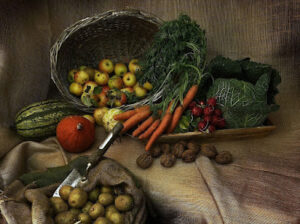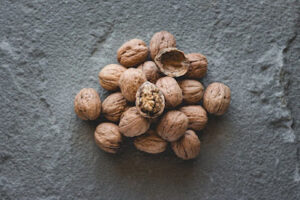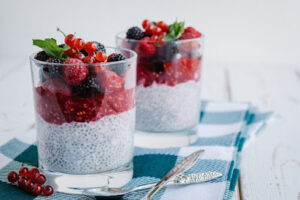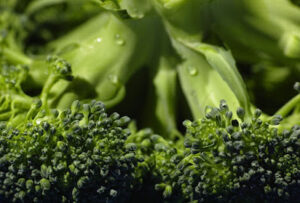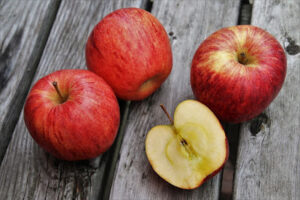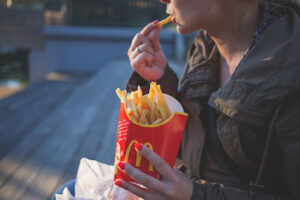A Beginner’s Guide to Clean Eating
Clean eating is a dietary approach that emphasizes the consumption of whole, unprocessed foods. This lifestyle focuses on eating foods in their most natural state, free from added sugars, unhealthy fats, and artificial ingredients. By prioritizing whole foods, clean eating aims to enhance overall health and well-being.
Adopting a clean eating lifestyle offers numerous benefits, including increased energy levels, improved mood, and better overall health. Unlike fad diets that often promote rapid, unsustainable weight loss, clean eating encourages a long-term shift towards healthier eating habits.
What is Clean Eating?
Clean eating is a simple and health-focused approach to nutrition that emphasizes consuming whole foods and minimizing the intake of processed foods. The core idea is to eat foods in their most natural state, avoiding additives, preservatives, and artificial ingredients.
Difference Between Whole Foods and Processed Foods
Whole foods are unprocessed or minimally processed foods that retain most of their natural nutrients 🥦. Examples include fruits, vegetables, whole grains, nuts, seeds, and lean proteins like fish or chicken. On the other hand, processed foods have been altered from their natural state through methods like canning, cooking, freezing, or adding preservatives and artificial ingredients 🍔. Examples include sugary cereals, packaged snacks, ready-to-eat meals, and fast food.
Examples of Clean and Processed Foods
For easy identification, clean foods include fresh fruits and vegetables like apples and spinach 🍏🥬, whole grains like quinoa and brown rice 🍚, nuts and seeds like almonds and chia seeds 🌰, lean proteins like chicken breast and salmon 🐟, and legumes like beans and lentils 🌿. In contrast, processed foods include sugary cereals 🥣, potato chips and other packaged snacks 🥨, sodas and sugary drinks 🥤, frozen meals with additives ❄️, and fast food items like burgers and fries 🍟.
Benefits of Clean Eating
One of the main benefits of clean eating is increased energy levels. 🍏 Whole foods provide your body with essential nutrients and stable energy sources. Complex carbohydrates from whole grains and fiber-rich vegetables release energy slowly, avoiding spikes and crashes in blood sugar levels. Research has shown that diets rich in whole foods can improve overall energy and reduce fatigue.
Improved gut health is another significant benefit. 🌾 Whole foods, especially those rich in fiber like fruits, vegetables, and whole grains, support a healthy gut microbiome. A balanced microbiome enhances digestion and nutrient absorption, reducing symptoms of gastrointestinal disorders. Studies indicate that a diet high in fiber can promote the growth of beneficial gut bacteria.
Clean eating can also aid in weight management by reducing the intake of high-calorie, low-nutrient processed foods. 🥕 Whole foods tend to be more filling and nutrient-dense, which helps control appetite and reduce overeating. Research suggests that diets focusing on whole foods are associated with healthier body weights and lower risks of obesity.
A stronger immune system is another advantage of clean eating. 🍊 Whole foods are packed with vitamins, minerals, and antioxidants that support immune function. For instance, fruits and vegetables high in vitamin C and beta-carotene can enhance immune responses. Studies have found that a diet rich in whole, nutrient-dense foods can improve immune function and reduce the risk of infections.
Finally, clean eating can boost your mood. 🌞 Nutrient-rich diets have been linked to better mental health outcomes. Whole foods provide essential nutrients that influence brain function and mood regulation. Omega-3 fatty acids from fish, for instance, are known to reduce symptoms of depression. Research shows that diets high in fruits, vegetables, and whole grains are associated with lower risks of depression and anxiety.
Getting Started with Clean Eating (Actionable Tips)
Transitioning to clean eating can be simple and rewarding with a few practical steps. Here’s how you can start:
1.Start Small: Begin by making gradual swaps to whole foods. Replace white bread with whole grain bread, choose fresh fruit over sugary snacks, and opt for water instead of soda. Small changes can add up over time, making the transition smoother and more sustainable. 🍎
2.Read Food Labels: Get into the habit of reading food labels to be mindful of added sugars, sodium, and unhealthy fats. Look for short ingredient lists with recognizable items. Avoid products with artificial additives and preservatives. 📜
3.Plan Your Meals: Planning your meals in advance can help reduce reliance on convenience foods. Set aside time each week to prepare a meal plan, create a grocery list, and prep ingredients. This makes it easier to stick to clean eating habits. 📅
4.Stock Your Pantry with Clean Staples: Keep your kitchen stocked with clean eating essentials like fruits, vegetables, whole grains, and lean proteins. Having these items readily available makes it easier to prepare nutritious meals. 🥦
5.Cook More at Home: Cooking at home allows you to control the ingredients and portion sizes of your meals. Experiment with new recipes, and enjoy the process of preparing wholesome food. 🥘
Clean Eating Essentials (Grocery Shopping Guide)
To support a clean eating lifestyle, focus on including a variety of essential food groups in your diet. Here’s a guide to help you shop for clean foods:
1.Fruits & Vegetables
Aim to include a rainbow of fruits and vegetables in your diet to ensure a wide range of nutrients. Fresh, frozen, and even canned (without added sugars or salts) are good options.
Examples: Apples, berries, oranges, spinach, kale, bell peppers, broccoli, carrots. 🍎🍓🍊🥦
2.Whole Grains
Whole grains are less processed than refined grains and retain more nutrients and fiber. Look for whole grains in their natural form.
Examples: Brown rice, quinoa, oats, barley, whole-wheat pasta, and bread. 🍚🌾
3.Lean Protein
Protein is essential for muscle repair and growth. Choose lean sources of protein and incorporate plant-based proteins as well.
Examples: Chicken breast, turkey, fish, beans, lentils, tofu. 🍗🐟
4.Healthy Fats
Healthy fats are important for brain health and hormone production. Focus on sources of unsaturated fats.
Examples: Avocados, nuts, seeds, olive oil, and fatty fish like salmon. 🥑🌰
Putting It All Together
By focusing on these clean eating essentials and taking small, manageable steps, you can gradually transition to a cleaner, healthier diet. Remember, the goal is to create sustainable habits that support long-term health and well-being. Happy eating! 🥗🌟
Tips for Overcoming Challenges
Transitioning to clean eating can come with its own set of challenges, but with some strategic planning, these hurdles can be overcome. Here are some common challenges and practical solutions:
Cravings
Cravings for unhealthy foods can be one of the biggest obstacles for beginners. To combat this:
•Healthy Snacks: Keep a variety of healthy snacks on hand, such as nuts, fruits, yogurt, or veggie sticks with hummus. This helps you avoid reaching for less nutritious options. 🥜🍇
•Hydration: Sometimes cravings are a sign of dehydration. Drink plenty of water throughout the day to keep cravings at bay. 💧
•Mindful Eating: Practice mindful eating by paying attention to why you crave certain foods and finding healthier alternatives. For example, if you crave something sweet, try a piece of fruit instead of candy. 🍎
Eating Out
Dining out can be challenging when trying to stick to a clean eating regimen. Here are some tips:
•Research: Look up restaurant menus online before going out to identify clean eating options. Many restaurants offer salads, grilled proteins, and vegetable sides that align with clean eating principles. 📱🍽️
•Modifications: Don’t hesitate to ask for modifications, such as dressing on the side, grilled instead of fried, or swapping fries for a side salad. Most restaurants are happy to accommodate dietary preferences. 🥗➡️🍟
•Portion Control: Restaurant portions can be large, so consider sharing a dish or asking for a to-go box to save half for later. This helps manage portion sizes and reduces overeating. 📦
Time Management
Busy schedules can make it hard to prepare clean meals consistently. Here’s how to manage:
•Meal Prep: Set aside time each week to prepare meals in advance. This could include chopping vegetables, cooking grains, and portioning out meals for the week. 🥙
•Simple Recipes: Opt for simple, quick recipes that don’t require a lot of time or ingredients. Stir-fries, salads, and sheet pan dinners are great options. 🥗🍲
•Batch Cooking: Cook larger quantities of food that can be used for multiple meals. For example, a big pot of soup or chili can be eaten throughout the week. 🍲
Clean eating offers a pathway to improved health and well-being by emphasizing whole, minimally processed foods. By gradually making small changes to your diet and lifestyle, you can reap numerous benefits such as increased energy, improved gut health, weight management, a stronger immune system, and a boosted mood.
Remember, transitioning to clean eating is a journey, not a race. Start where you are and make small, sustainable changes over time. By focusing on nourishing your body with wholesome foods, you can take control of your health and enjoy a more vibrant life.
So, whether you’re just starting out or looking to renew your commitment to clean eating, take that first step today. Your body will thank you for it! 🌱🍎🥑
Thank you for your time and consideration ❤️ 🙏..
@Puja Singh.



